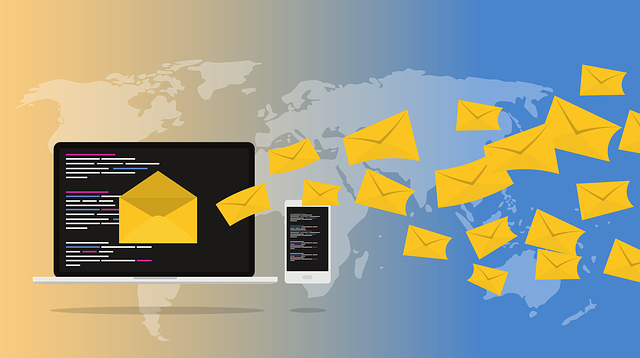Spam.
There, we said it.
A word that no doubt evokes strong emotion in anyone who has an email address. And being that it is 2019, that roughly accounts for about 4 billion people.
In this article, we talk about how you can successfully prevent your inbox from being flooded with “Claim Your Free Rolex Daytona Today” or “Click Here For Your $100 Amazon Gift Card” -esque emails. We also reveal how a trusted IT support company in Toronto is your wingman in 2019 to deliver you from all things spam.
How Spam Really Works (Psst: Not All Spam is Obvious)
Spam email is a type of commercial advertising tool which, to the sender, is economically viable to get the marketing message across, but to the receiver, is one of the most frustrating vices of life.
Research has shown that a very small fraction of people actually end up purchasing the advertised product in these emails, but that’s enough for spammers to profit. Thus, the problem is further perpetuated.
Are spam emails dangerous? They can be! Spam is sent to you from devices that are infected by viruses. Spammers compromise innocent users’ networks and convert them into spam-sending “drones”.
These malicious programs on your computer will generate even more spam mail, all the while pretending to be from a legitimate source. When you click on a spam email, you are opening a backdoor into your system – one that spammers are only too happy to take advantage of.
This begs the question; How do spammers get your email address? Cybercriminals crawl the internet for the “@” sign using sophisticated software. If you post your email address online, chances are, it will be harvested for this very purpose.
Another tactic is to legally or illegally purchase a list from a website or service for which you’ve signed up. Make sure you read all privacy policies so that you know exactly where and how your email is going to be used.
Wait, Spam Isn’t Obvious?
Unfortunately not. This is where the term “phishing” comes into the picture. Phishing is an increasingly common tactic used by cybercriminals to deceive unsuspecting users. They’re looking to get you to click on a link and give them access to your system or provide sensitive personal information like credit card numbers or passwords that they use to your detriment.
Phishing uses deceptive messages that are purported as being from a familiar/reliable/reputed source. By using a well-known company name or logo, they put the user off guard and coax them to act impulsively.
Scram Spam! 6 Tricks to Keep Your Inbox Spam-Free
Now that you know what it is, it’s time to learn how to deflect it. So, how do you stop spam emails? We reveal that below!
Always Mark Spam as Spam
Whenever unsolicited emails enter your inbox, don’t simply click delete. Instead, make it a point to mark them as spam. That way, you’re training your system to recognize future emails of the same nature and send them straight to the spam folder.
Depending on whether you use Gmail, Outlook or any other service, the steps to carry out the above will vary. If in doubt, go onto the official site of your designated provider and learn how to mark spam.
Do Not Put Your Email Address Out There
As mentioned before, spammers scrape the web for any text that has the “@” symbol. A common trick to elude these advanced tools was to type out an email address as “abc[at]gmail[dot]com” instead of “abc@gmail.com.” However, spammers have now grown wise to the latter tactic.
The solution is to not expose your email anywhere on the internet. If you have a business website and need users to get in touch, use a tool like Google Forms or JotForm to design a contact form that lets people reach you without you ever having to put your email address in plain sight.
Stay Away From Even Mildly Suspicious Mails
Every now and then, you’ll encounter a cyber criminal who puts a 1×1 image in the email. This image serves as a tracking signal. That way, when you open the email, the spammer is immediately notified that that email account is active – making it a perfect target for future correspondences. If in doubt, don’t touch any messages even with a ten-foot pole.
Don’t Sign Up For Any Newsletter Before Reading the Privacy Policy
Most companies don’t misuse your information, in fact, it’s part of their privacy policy to protect your confidentiality. Then there are others that aren’t as upstanding. Some companies simply collect email addresses in a bid to sell them to spammers at a hefty price. In time, you’ll find your inbox flooded with unfamiliar products that you have zero interest in. Moral of the story? Read the fine print.
Unsubscribe From Newsletters That You Have No Interest In
Not all spam is unsolicited spam. You may have subscribed to an organic hand lotion newsletter way back in 2008 and forgotten about it. When you unexpectedly receive an email from them years later, it’s easy to assume that the email sender has nefarious intent, when in fact, they really don’t. Regardless, this clutters your inbox something awful.
Instead of deleting such emails, simply look for the “Unsubscribe” link at the bottom of the email (by law, every company is supposed to have this link at the bottom of each newsletter) and voila, no more spam!
Download Trusted Third-Party Extensions
Third-party extensions like Mailwasher and SpamSieve are great tools to nab unsolicited messages as they travel from the email server to the email client. These are intelligent filters that identify your messages and review them before placing them in your inbox. You can train them to get smarter over time by marking the messages you recognize as safe. That way, these tools will automatically adjust your preferences.
Tired of Seeing All That Spam in Your Inbox? The MIT Team is Your Personal Clean-Up Crew!
Canada is cited as one of the top countries that must prepare for cybercrime attacks in 2019. MIT protects your system by using the most powerful anti-virus solutions to rid your inbox of spam. Start today and stay prepared. Contact us for more information!






